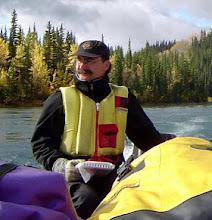
Hiking the Chilkoot is an exhilarating experience. Although a rugged and challenging back country trail, the character of the pathway, fine camping facilities and the watchful eyes of the Rangers and Wardens make it a safe trip. With some preparatory fitness training and a decent outfit you can have an unforgettable adventure.
The Chilkoot Trail Hiker Preparation website has a lot of worthwhile information. You can also download the webpages as a printable brochure at the bottom of the page if you like.
http://www.pc.gc.ca/eng/lhn-nhs/yt/chilkoot/activ/activ1a.aspxIf you'd like to review my hike over the trail last August see my entries for August 21 - 23 at:
Bear Safety information is available at:
http://www.pc.gc.ca/eng/lhn-nhs/yt/chilkoot/activ/activ1a/activ1c_g.aspx
http://yukonrambles.blogspot.com/2009_08_01_archive.html
And if you are really serious about enjoying your hike read the book:

Chilkoot Trail: Heritage Route to the Klondike
David Neufeld and Frank Norris. Only $25 atMac's Fireweed or the Parks Canada office
The proposed itinerary for the hike:
June 26 Saturday afternoon, to Skagway, enjoy dinner (yummy curry) and a good sleep at comfy hotel or B&B.
June 27 Sunday, Dyea to Canyon City (12.5 easy kilometres)
June 28 Monday, Canyon City to Sheep Camp (8.5 kilometres, some grunting)
June 29 Tuesday, Sheep Camp to Happy Camp (12 kilometres, about 8 hours, very healthy!)
June 30 Wednesday, Happy Camp to Lindeman (9 kilometres, great views)
July 1 Thursday, Lindeman to Bennett (11 kilometres, pleasant)
And train to Carcross or charter plane to Whitehorse.
I look forward to getting together to plan the trip in early May.





.JPG)
.jpg)


































